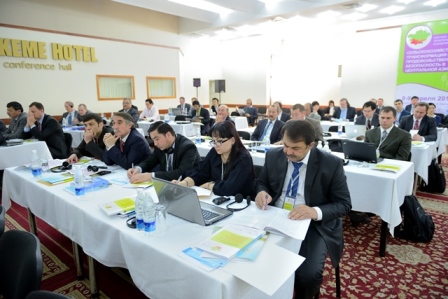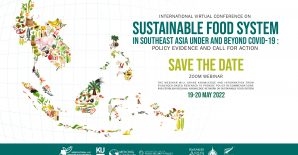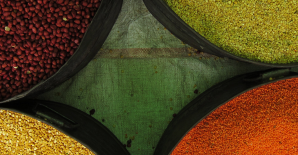IFPRI and the University of Central Asia (UCA) organized a policy research conference on April 8-9 in Bishkek, Kyrgyzstan, on agricultural transformation and food security in Central Asia. Nearly 70 government officials, development partners, and researchers from the region and abroad gathered and shared lessons and knowledge on the region. The conference focused on four Central Asian countries - Kyrgyzstan, Tajikistan, Uzbekistan, and Kazakhstan - covering a wide range of topics, including agricultural and structural transformation, value chains, food safety and nutrition, markets and trade, land reform and consolidation, agricultural productivity, climate change, remittances, and other emerging issues of importance to the region.
While agriculture accounts for a significant share of employment and gross domestic product, agricultural productivity remains relatively low in Central Asian countries. To achieve long-term sustainable food security, Central Asian economies need to significantly improve both land and labor productivity in agricultural sector. The rising agricultural productivity is necessary for achieving structural transformation, which involves declining share of agriculture in employment and output and moving from a traditional economy to an industrialized one, with a smaller but more productive agriculture sector, increased labor productivity, urbanized population, and demographic transition. However, the research presented at the conference showed that the share of labor in agriculture in Central Asian countries generally falling more slowly than the agricultural share of GDP, suggesting that labor productivity in agricultural sector is lagging behind the non-agricultural sector. The structural transformation path is also uneven across countries: Tajikistan saw the widest disparity, with agricultural labor increasing as the productivity (income) differential between agriculture and non-agricultural sectors grows; and Kazakhstan is facing a problem of absorbing the surplus labor into non-agricultural sectors. In general, investment in agriculture, labor-intensive manufacturing sectors and infrastructure is needed to improve productivity and keep Central Asian countries on the transformation path.
The food security situation varies across the region. Countries dependent on food imports such as Tajikistan and Kyrgyzstan are highly vulnerable to external shocks such as global food and financial crises. At the same time, resource-rich countries and grain exporters such as Kazakhstan could benefit from the higher commodity prices. Despite food and commodity price volatility, the region saw strong economic growth and poverty reduction over recent years.
Labor migration is widespread in Central Asia, with large numbers of migrants from Tajikistan, Kyrgyzstan and Uzbekistan working in Russia. Kazakhstan is also becoming an important destination of labor migration within the region. As a result, remittances have become increasingly important in the region’s economy, equivalent to 48 percent of GDP in Tajikistan and 31 percent in Kyrgyzstan in 2013. Data shows a steep rise in total remittance inflows in these two countries, which is contributing to improved food security—though also creating vulnerability to external economic shocks or policy changes in Russia that may reduce migration opportunities.
Wheat is a major staple in the Central Asia region. In Tajikistan, wheat accounts for 52 percent of daily calorie intake, and 40 percent of total food imports. Wheat production has been increasing since the 2000s. A study shows that the domestic wheat prices in Tajikistan are integrated with regional and international market prices.
Country-specific experiences and lessons on many other topics were also presented and discussed. Find more information on the conference page.




Leave a Reply